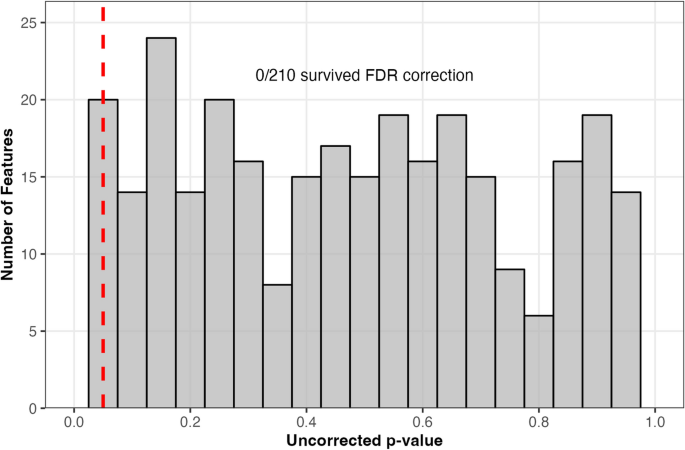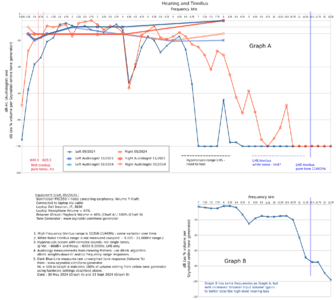A PhD dissertation that concludes that GPIAS works in humans.
Change in Acoustic Startle as an Indicator of Continuous Tonal Tinnitus
Abstract: Currently, there is no accepted objective measure of tinnitus in humans. The gap prepulse inhibition of acoustic startle (GPIAS) paradigm is an objective measure that has been used in the animal model to identify tinnitus based on the theory of tinnitus filling in the silent gap that would normally promote startle inhibition. The current study applied the GPIAS paradigm in human subjects with normal hearing thresholds without hyperacusis. Individuals with continuous tonal tinnitus (N=31) characterized their tinnitus by adjusting a signal to match the frequency, bandwidth, and intensity. These individual parameters were used to create maximally matched background sounds in the GPIAS paradigm for each subject. A group without tinnitus (N=8) also participated using the averaged parameter values of the background sound from the group with tinnitus. Startle inhibition percentage was calculated by comparing ocular EMG blinking amplitudes between gap embedded conditions and the condition without a gap. As expected, the group with no tinnitus revealed startle inhibition as evidenced by reduced EMG blink amplitudes when the background sound was interrupted by a silent gap prior to the startle impulse (100 dB SPL white noise). The group with tinnitus did not have a significant startle inhibition in this same condition supporting the theory that the background sound carefully matched to their tinnitus eliminated the perception of a silent gap, thereby removing the cue that would produce startle inhibition. Gradually increasing the contrast between the individual's continuous tonal tinnitus and ongoing background sound leads to a nonlinear change in startle inhibition percentage, providing guidelines for how closely the background sound needs to match the tinnitus of an individual in v order to get the expected result of no startle inhibition when tinnitus is filling in the gap. Collectively, these findings support the use of the GPIAS paradigm for objectively identifying continuous tonal tinnitus in humans. Further, certain deviations in frequency, intensity, or bandwidth in the ongoing background sound from the tinnitus match result in startle inhibition, which may help explain the inconsistent findings across human GPIAS studies and allow more confidence for animal researchers to use GPIAS for animal tinnitus studies.
Change in Acoustic Startle as an Indicator of Continuous Tonal Tinnitus
Abstract: Currently, there is no accepted objective measure of tinnitus in humans. The gap prepulse inhibition of acoustic startle (GPIAS) paradigm is an objective measure that has been used in the animal model to identify tinnitus based on the theory of tinnitus filling in the silent gap that would normally promote startle inhibition. The current study applied the GPIAS paradigm in human subjects with normal hearing thresholds without hyperacusis. Individuals with continuous tonal tinnitus (N=31) characterized their tinnitus by adjusting a signal to match the frequency, bandwidth, and intensity. These individual parameters were used to create maximally matched background sounds in the GPIAS paradigm for each subject. A group without tinnitus (N=8) also participated using the averaged parameter values of the background sound from the group with tinnitus. Startle inhibition percentage was calculated by comparing ocular EMG blinking amplitudes between gap embedded conditions and the condition without a gap. As expected, the group with no tinnitus revealed startle inhibition as evidenced by reduced EMG blink amplitudes when the background sound was interrupted by a silent gap prior to the startle impulse (100 dB SPL white noise). The group with tinnitus did not have a significant startle inhibition in this same condition supporting the theory that the background sound carefully matched to their tinnitus eliminated the perception of a silent gap, thereby removing the cue that would produce startle inhibition. Gradually increasing the contrast between the individual's continuous tonal tinnitus and ongoing background sound leads to a nonlinear change in startle inhibition percentage, providing guidelines for how closely the background sound needs to match the tinnitus of an individual in v order to get the expected result of no startle inhibition when tinnitus is filling in the gap. Collectively, these findings support the use of the GPIAS paradigm for objectively identifying continuous tonal tinnitus in humans. Further, certain deviations in frequency, intensity, or bandwidth in the ongoing background sound from the tinnitus match result in startle inhibition, which may help explain the inconsistent findings across human GPIAS studies and allow more confidence for animal researchers to use GPIAS for animal tinnitus studies.

 Member
Member

